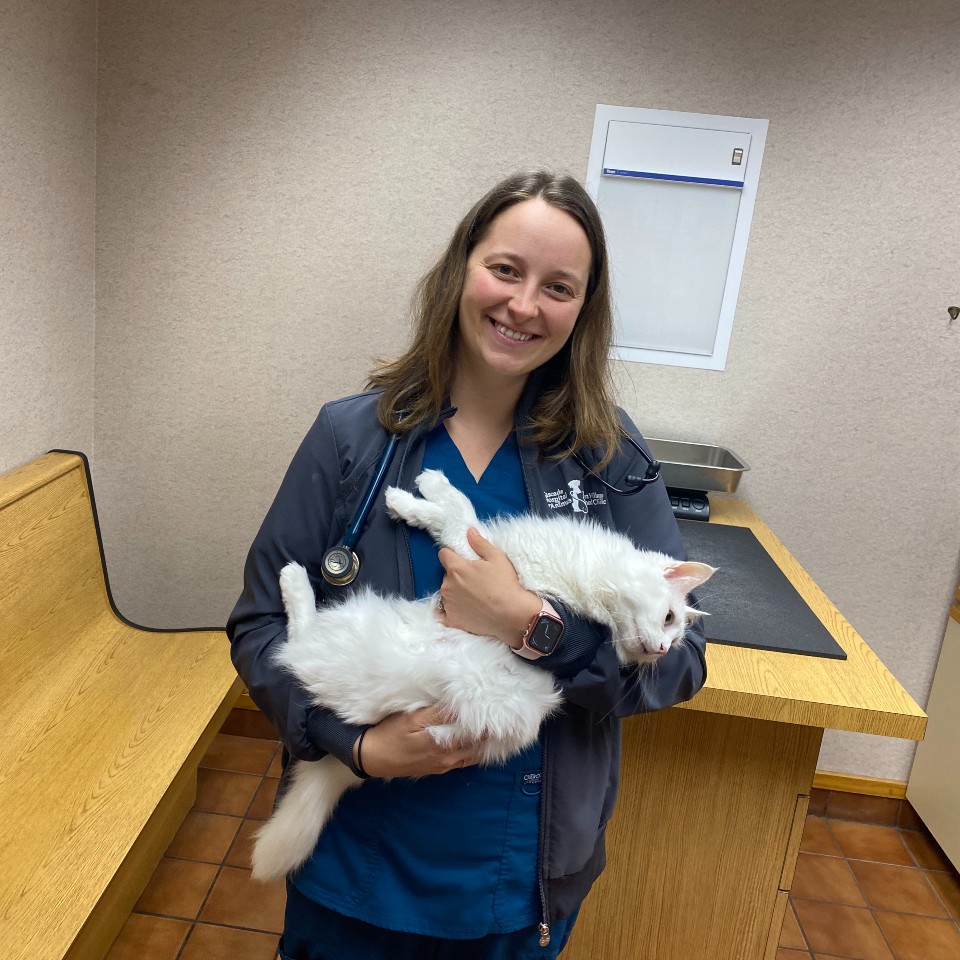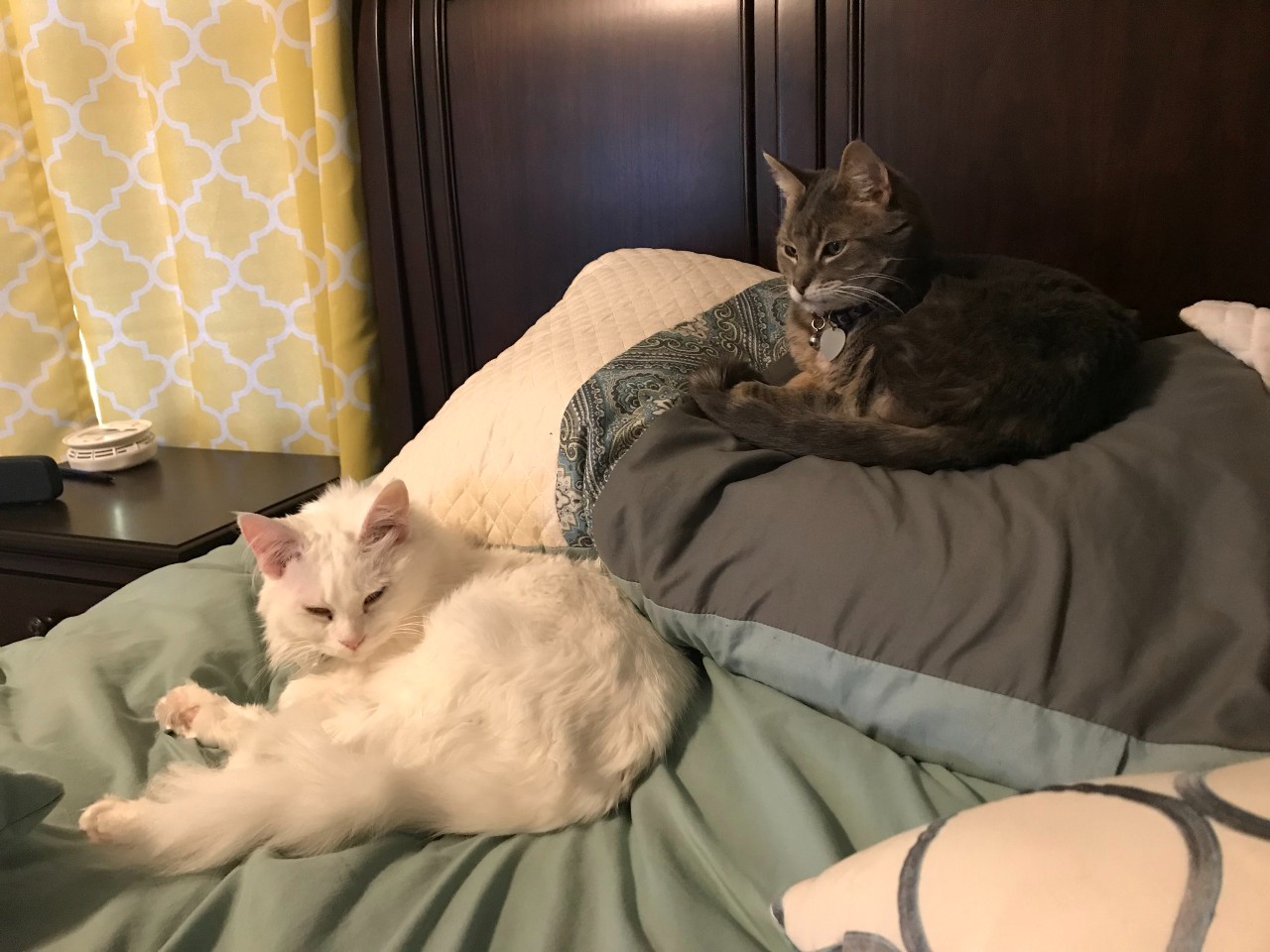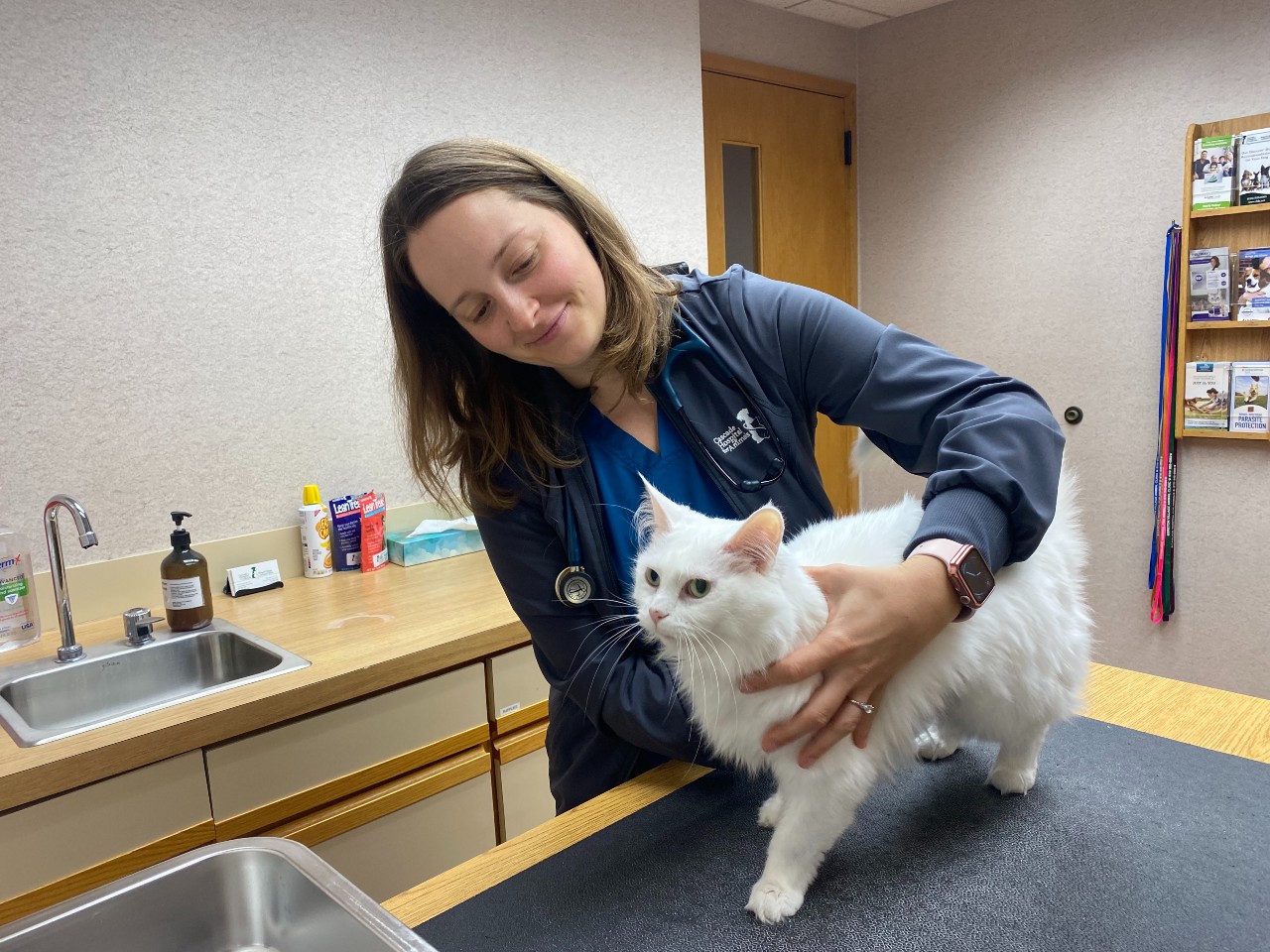
Multi-Cat Households: How to Make them Work for Everyone
For some cat lovers, their family just isn’t complete with one cat! And while there are many advantages to having more than one cat—they keep each other active and mentally stimulated for starters—there are many considerations and necessary first steps before making your household a multicat one.
Starting out strong
According to Dr. Justine Rasche of CHFA, who often helps clients with their inter-cat relationship issues, it’s important to make sure your house can accommodate more than one cat. “First, ask yourself, do you have the space, means, and ability to provide for another cat in your home?,” she said. “That means financially for medical care; meeting the core needs of food, water, and litter box; but beyond that, making sure the cats have enrichment in the home and that they integrate well into your life.”
Next, it’s important that the cats who will be living in your home can coexist peacefully. One of the best ways to ensure your cats will get along is to adopt a bonded pair or group. “If you are looking to adopt multiple cats, it’s best to look at related kittens that you adopt together, a mother-daugher pair who’ve been together since birth, unrelated kittens who were introduced very young, and sometimes unrelated adult cats who have done well in the past with other cats,” said Dr. Rasche. “Those situations are the most likely to give us a really good positive outcome.”
“The flip side of that would be trying to introduce a kitten into a home that has a senior cat,” she added. “Those are the cases where we would be most likely to see behavioral issues occur. Or if you have unrelated adult cats who probably have shown in the past that they don't like other cats.”
Smooth introductions
If there is a single cat living in your home and you are interested in introducing a companion, Dr. Rasche recommends taking a slow, steady, and patient approach that is in the best interest of both cats. She related her own experience as an example.
 Dr. Rasche's cats, Franny and Lily, came to live together as friends over time with patience and persistence.“I had an adult cat,” she said. “I introduced a new one and it took six months for the two of them to be cordial with each other, which in their case meant resting on the same bed in proximity to each other, which in cats is actually a sign that they're friends.” Taking time to slowly introduce each cat to the other and welcome the new cat into his new environment is vitally important in preventing serious behavioral problems later on. “At first they should never see each other, even though they are in the same household. The first step is just intermixing smells, taking a towel or something soft each has laid on and then giving it to the other: do that until they are not reacting to that smell.”
Dr. Rasche's cats, Franny and Lily, came to live together as friends over time with patience and persistence.“I had an adult cat,” she said. “I introduced a new one and it took six months for the two of them to be cordial with each other, which in their case meant resting on the same bed in proximity to each other, which in cats is actually a sign that they're friends.” Taking time to slowly introduce each cat to the other and welcome the new cat into his new environment is vitally important in preventing serious behavioral problems later on. “At first they should never see each other, even though they are in the same household. The first step is just intermixing smells, taking a towel or something soft each has laid on and then giving it to the other: do that until they are not reacting to that smell.”
“Then start to do blocked physical exposure, so they can see each other a little bit, maybe through a cracked door, but they can't touch each other,” said Dr. Rasche. “You do that very slowly, and the whole time, feed them treats and make it a pleasant experience. You're trying to get them to a point where they can be near each other.”
If this process is going well so far, you can start doing full visual exposure, such as a gated door or one cat in a crate, followed by restricted access, meaning one cat in a harness.
“You've got to make sure that you're there with them all the way, because one of the biggest mistakes is going too fast or saying, ‘Eh, we'll just see what they do,’ and you let them go out into the room and then they have a bad interaction. There's aggression, there's hissing, and then that relationship has completely broken down and you're starting at square one,” said Dr. Rasche.
“The success of the first introduction period sets up the long-term coexistence of these cats in studies. So if you have a bad first introduction, the studies say in the long-term it is going to be much more challenging for you to get those cats to a point where they coexist. But if you're very slow and methodical about it and take your time and read your cat's signals, as long as those first days and weeks are positive, then you have a better chance of having them coexist positively together.” Dr. Rasche’s persistence with her two cats paid off and they lived together peacefully for many years.
Correcting behavior
If a cat isn’t getting along with the other cats in the household, it will become readily apparent. “We can see things like misdirected play aggression, where, for example, a really young kitten is Dr. Rasche gives her cat, Lily, a routine exam. trying to play with this older, maybe arthritic senior cat, leading to aggression in the older cat and leading to quality of life issues there,” said Dr. Rasche.
Dr. Rasche gives her cat, Lily, a routine exam. trying to play with this older, maybe arthritic senior cat, leading to aggression in the older cat and leading to quality of life issues there,” said Dr. Rasche.
She recommends looking for signs of distress, such as inappropriate urination or aggressive behavior when a new cat has been introduced into a home. “Often the bully cat isn’t the one showing signs of aggression. The one who’s hissing or running away is acting out against the new cat who may be blocking them from the litter box or getting their food and the other cat is responding in a defensive way. If you have that situation, you want to make sure that you have a safe haven for that older cat, an area where only the older cat can go. I’ve heard of putting a belled collar on a younger cat so that an older cat has a warning to hide when the younger cat is nearby.”
Make sure the aggressor cat gets a play outlet so that they aren’t bothering the older cat. “Set up a definitive time to play with them, get all of that energy out, get them their needs of hunting and all of those behaviors that they're trying to take out on that older cat who's just not having it.”
Seeking Veterinary Care
If at any point in your multi-cat household, whether during a new introduction or among long-time established relationships, you are noticing signs of aggression or fear, always contact your veterinarian for recommendations. We are here to help you read their communication signals and help make your home a peaceful place for all through a variety of resources!



